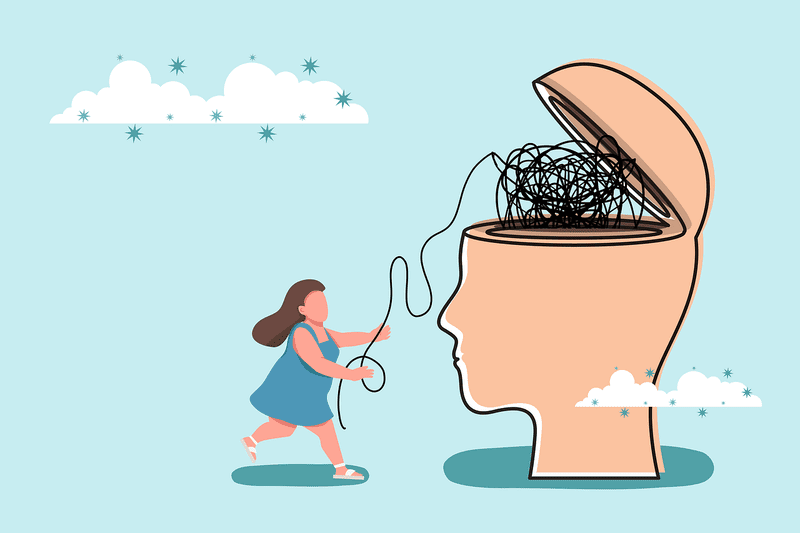Over the last few years, mental health issues have become much more severe, especially among the young. This means efforts to identify and treat these issues should be stepped up. For a better future for the nation in 2025, investing in youth mental health has become fundamental. They experience pressure from social media, demanding academic schedules, and other pressures that lead to these mental health issues. This article focuses on various aspects of the analyzed problem, the need for intervention at the right time, and the key measures to guarantee the proper psychological well-being of the young generation.
The Growing Mental Health Crisis Among Youth
The mental health of young individuals has been worsening over the last ten years. Estimates show that annually, fifteen percent of adolescents are affected by a given mental health disorder, the common ones being anxiety and depression. This can be due to more time spent online, especially due to the effects of global events, which brought about severe economic changes and societal pressure. The pandemic also contributed to such situations, as the youth especially feel loneliness, loss, and general confusion about what will happen next to them.
With moving towards 2025, youth with mental health problems are only going to increase unless steps are taken immediately. Stress, anxiety, and depression levels will be higher than before, and the ability to seek quality mental health treatment will be more important than ever. Eradicating the culture of mental disorder shame is important in increasing awareness so that adolescents seek help without the looming stigma labels.
The Impact of Social Media on Youth Mental Health
Social networking is a virus in today’s modern generation. On the one hand, it offers opportunities to communicate and to get to know people. On the other hand, it is the source of fear from cyberbullying, dangerous beauty standards, and the relentless bombardment with idealized life. Research has revealed that young people who spend so much time on social media networks are more likely to develop anxiety, depression, and lower self-esteem.
The usage of social media will not decrease soon, and people need enough information about how it influences them. This would leave the youth well-equipped to understand the need for better health born from healthy digitized social interactions and where or when to seek help. When schools and communities embrace mental health education, adolescents will find ways to develop healthier relationships with social media, which will benefit their mental health. Moreover, for today’s children and youths, parents and caretakers must be much more involved in the use of the internet or any other devices.
The Role of Schools in Supporting Youth Mental Health
Schools, in particular, have a very important responsibility for the psychological well-being of young people. Youth are in school for most of their waking hours. Most schools now offer programs for enhanced student mental health education, with such goals as coping with anxiety and stress among students. It is a very great start for helping adolescents with mental health. Still, there is a long way to go with this.
Schools must establish programs for mental health literacy for students, school counselors on campus, and teacher training on identifying mental health indicators. Schools should also ensure that students seeking help are okay and that mental issues should not be hushed. This would help avoid complexities that make youths feel as if they are a nuisance every time they need help. School leaders also need to coordinate with local mental health agencies on how students are supported.
Fostering a Supportive Environment at Home

Family has a big impact on the mental health of a young person. Parents and guardians are usually the first to recognize changes in behavior or mood in youth. It is envisaged that parents/caregivers by the year 2025 should be in a position to understand the fundamentals of child mental health. This comprises awareness of the symptoms of mental illness, ways of speaking about things and expressing feelings, and ways of seeking mental health care.
Parenthood education and family, together with self-help groups, can develop such skills. Making youth feel appreciated, countering bullying, and effectively responding to family needs are powerful tools in maintaining adolescent mental health. Parents who also bear the responsibility of having a voice in the schools and local communities on what needs to be put in place to support the mental health needs of children will also strengthen the safety nets in place.
Final Thoughts
Looking into 2025, it remains utterly imperative to shift focus to improve youth mental health. Young people must also be empowered to identify their requirements and take collective action to ensure they receive all the support they need. This includes better education, improved access to support services, good families, and protecting them from toxic online environments. Let’s set a goal to achieve even better results in youth mental health in 2025 and thus focus on creating a healthier generation for tomorrow.
Disclaimer: This article is intended simply to provide information. It does not replace the medical advice of a physician or other medical professional. Please speak with your doctor or therapist if you have any questions or concerns.










